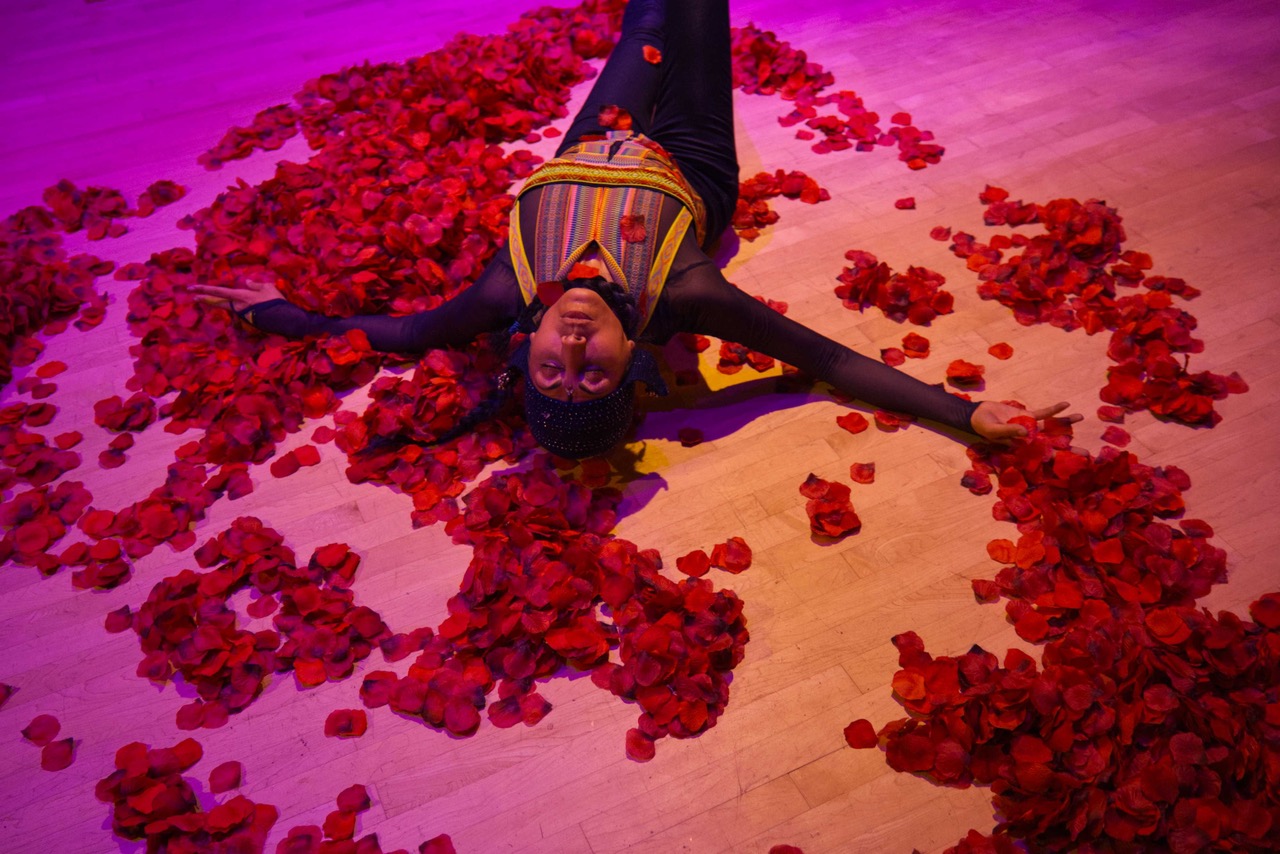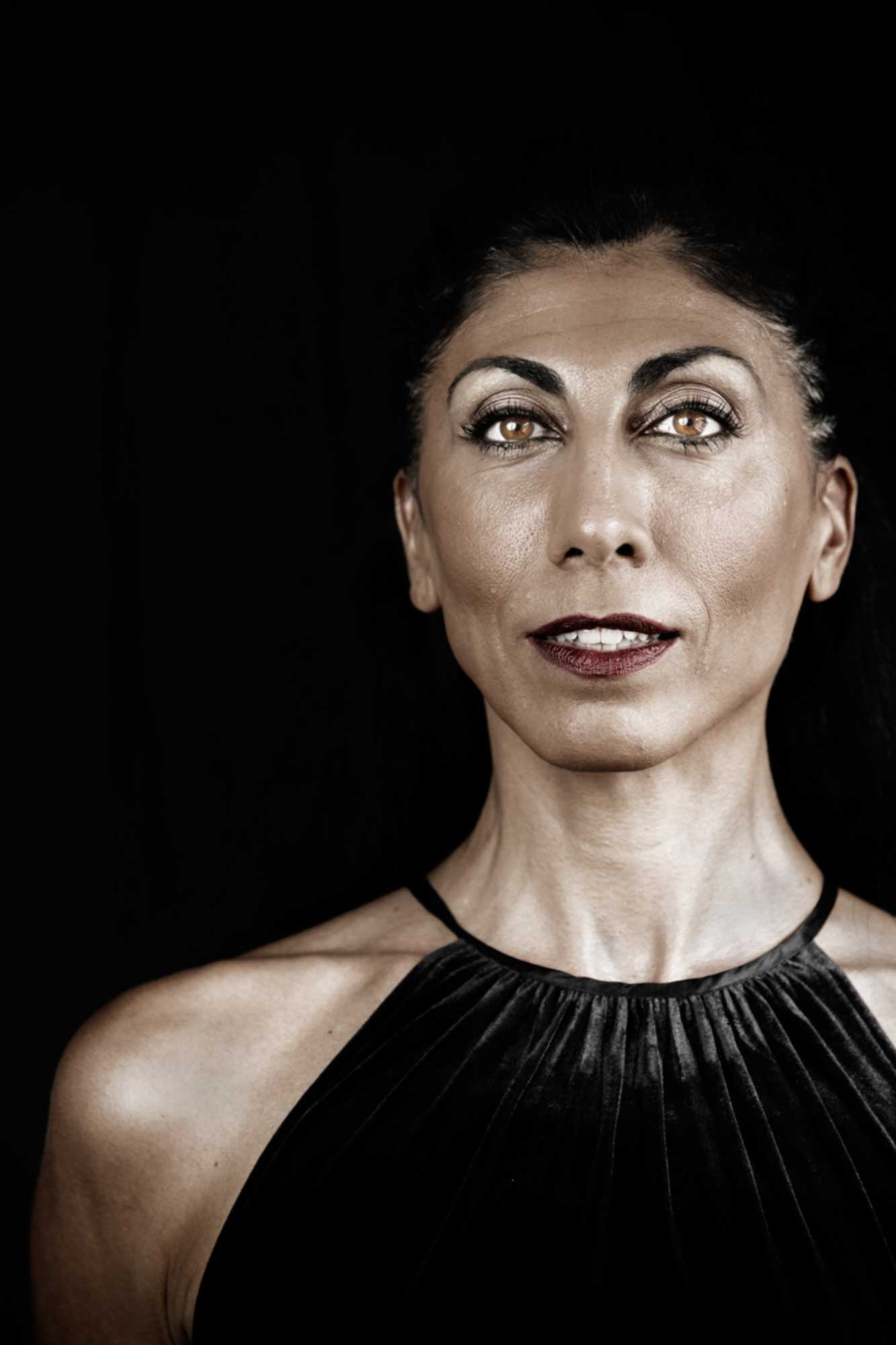
By Judy Carmack Bross

Dancer and Choreographer Nejla Yatkin performs “Ouroboros
“Make waves,” dancer and choreographer Nejla Yatkin shows and tells her entranced audiences.
Recognized in the New York Times for her “fierce and subtle performances,” the German-born dancer and choreographer will encourage audiences at her interactive solo performances March 8-10 at Links Hall, to move like waves along with her. A perfect instruction for her performance of “Ouroboros” celebrating International Women’s Day, Yatkin will sit in a circle through part of the program encouraging guests to try ancient snake dance motions as well as fascinating them with her own choreography based on contemporary and Middle Eastern dances. She has described the evening’s artistry as a “transformational journey.”

“Ouroboros is very ancient symbol and used across many cultures as a symbol of cosmic harmony, eternity, and the cycle of birth and death,” the 2023 Guggenheim Fellow recipient, choreographer, educator and global artist proclaimed. “The movement of waves is one of my favorite patterns, they can be observed not only in bodies of water but in deserts, mountains, and blades of grass. Although my programs are choreographed I have freedom to make some changes at each performance and I develop in collaboration with the audience.
“As we move like waves it is very healing for our central nervous system, our spine and our hips, really so good for the whole body. We can even draw waves in the air.”

“Dance is a crucial form of contact, we learn about life through our bodies, there is no need for the translation of our thoughts through words. In a circle we can see everyone’s vantage point,” Yatkin said.
Growing up within a Turkish family in Berlin, Yatkin notes that she experienced movement from many cultures, including snake dances from the ancient lands of the Middle East. Her early life was shaped by the contrasts between Turkish traditions and more modern German life. Inspired by her nomadic ancestry, Yatkin incorporates original composition, multiple languages including English, German, Turkish, movement and ASL, live music and a fusion of dance styles, including contemporary and Middle Eastern dance as well as pantomime, Martha Graham techniques and drama.
“Turkish dances vary greatly, in the southern region people often dance with wooden spoons, in a different area the music has more of a North African rhythm,” she said.

“Reconstructing Mata Hari” remains one of her most fascinating pieces.
“Mata Hari was such a special opportunity to weave history and dance. She was one of the first female performers who took things into her own hands. She was misunderstood and definitely before her time. She was a Dutch dancer who was taken to Java where her abusive husband was in the military. She fled to Paris and in trying to establish her own identity she met her downfall. In choreographing the dance I found out that Mata Hari incorporated Javanese and exotic dances from the Far East. I incorporated modern dance and Middle Eastern dances in the weaving of the story.”

Yatkin moved to Chicago in 2010 and was an Associate Professor at Notre Dame. She was commissioned to create works for Northwestern University and performed at the Dance Center of Columbia College Chicago.
“There is a lot of dancing in Chicago, spread out across the whole city. Of course, there is a lot of interest in the larger companies and many of the smaller companies have to find ways to publicize their works.”
 |
 |
“Every time we come together in a circle, we heal the sacred thread of the feminine,” Yatkin said. “For millennia, feminine power, expression and wisdom have been suppressed, dismissed and disrespected. I feel every time we honor our body, express our wisdom, share our voice and connect with our sensuality, we heal the sacred thread of the feminine. Ouroboros also is a way to reclaim the original power of dance, which was inspired by observing, mirroring and imitating nature to understand ourselves and the world around.
“I look forward to welcoming each audience and hope to share in the circle some of the secrets of dance. I hope audience members will reflect on their own journeys.”

Collaborating with Yatkin are costume designer Katrin Schnabl, composer Shamou, lighting designer Giau Truong, set designer Delena Bradley, sound designer Sathapat Sangsuwan, deaf artist Susan Elizabeth Rangel, video artist Enki Andrews and dramaturg Joanna Furnans.
Yatkin began creating Ouroboros in 2021 with residencies through the Morrison-Shearer Foundation at Ragdale and Links Hall, where she previewed the work in 2022 and returned for a technical residency this February supported by a National Dance Award grant. She also received the National Dance Award and a National Performance Creation Award for the production of Ouroboros.
The performance takes place Friday–Sunday, March 8–10, 2024 at 7 p.m. at Links Hall, 3111 N. Western Avenue in Chicago. For further information visit linkshall.org or ny2dance.com.







